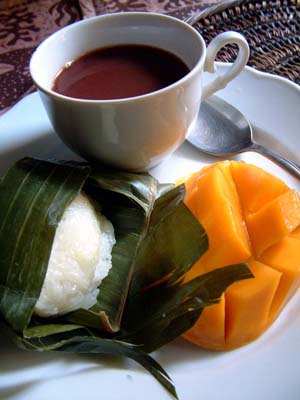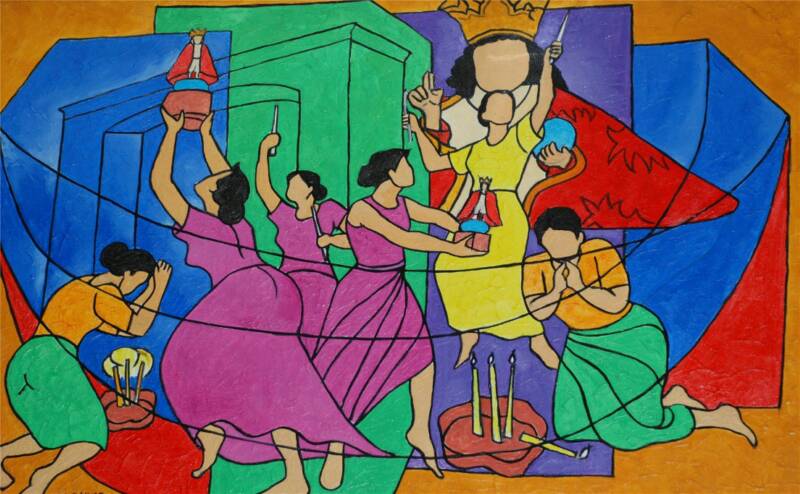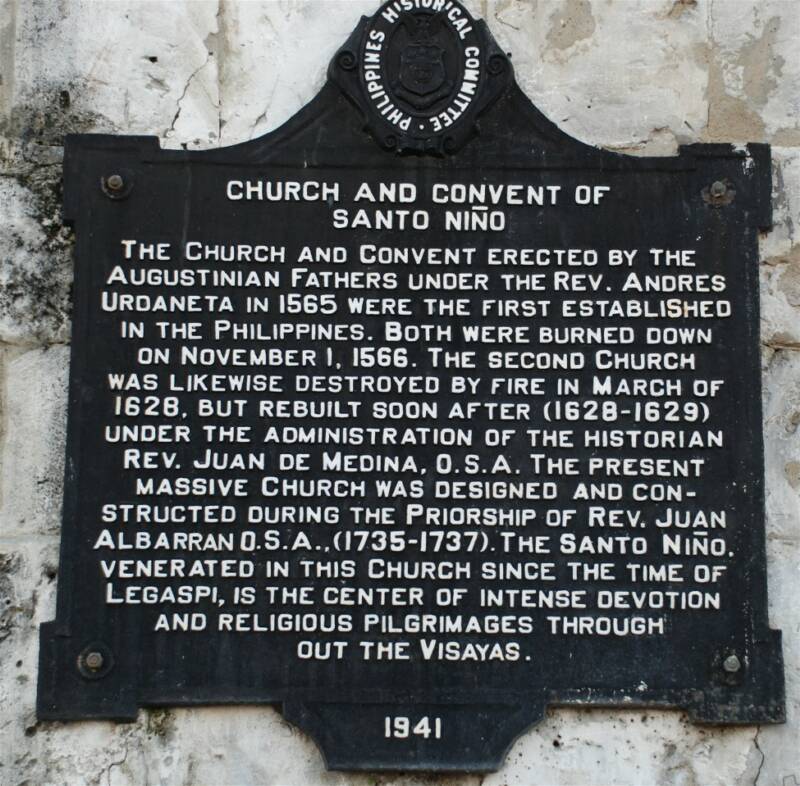Bato Balani sa Gugma
by Lorena Lloren
January 23, 2008
Cebu just finished its Sinulog 2008 yesterday and from all reports it was the biggest and best so far! As a native, true blue, tried and true, born and bred Cebuana, it goes without saying that I’m as proud as all of us anywhere in the world that the Sinulog festival has become the well-known extravaganza it is today.
However, again as a native, true blue, tried and true, born and bred Cebuana, we need to remind our fellow Cebuanos, particularly the younger generation, that the Sinulog celebration is not only the Grand Parade conducted every third Sunday of January… not only the ever growing number of participants, or dance contingents, or tourists… not only the street revelry, or the beat of the drums, or the face paint and tattoos…
First and foremost, it is the Feast of the Holy Child Jesus that we celebrate. The Basilica Minore del Santo Niño is the center of the religious celebration and at the heart of it all, from which the Sinulog is derived, is the Cebuano devotion to the little Child.
Ever since I can remember, Fridays are special days because it is on Fridays that the novena to the Señor Santo Niño is held, just as Wednesdays are set aside as novena days for Our Lady of Perpetual Help. Filipino Roman Catholics particularly hold these days special to seek our Lord’s favor, our Lady’s mercy. And as a Catholic family, it was an obligation, religiously followed by our mother, indulged by our father, and tolerated by us their children, to go to the respective churches on these days and attend the novena masses.
However, due to the distance from our respective schools (STC and USC Boys High), as a family we were more inclined to participate in the Wednesday novenas to Our Lady of Perpetual Help in the Redemptorist Church rather than go all the way downtown to the Santo Niño Church, braving the traffic.
Because yes, even then, it was a really devoted soul who braved the downtown traffic on Friday afternoons to attend the Santo Niño novena. The Basilica would be jampacked, the warm tropical weather further aggravated by the heat coming from hundreds of votive candles lit in their red glass holders, each candle representing a prayer to the Santo Niño.
Then, as now, people would stand before their candles, silently praying their petitions, their lips moving soundlessly, heads bowed reverently, earnestly beseeching heaven. Others patiently waited in line, shuffling forward every few minutes, for a chance to see the miraculous image of the Santo Niño up close, wipe their handkerchiefs on, or kiss the front of, the glass housing of the image, believing in the power of the Little Child to grant their petitions.
As the years passed and the devotion to the Holy Child grew, so did the number of pilgrims, until finally the Augustinian fathers decided to build the Pilgrim Center, outside the main church, where more devotees could be accommodated, especially those from outside Cebu City who came especially every third week of January to fulfill their pana-ad and perhaps to dance the Sinulog at the church entrance, entreating the fulfillment of their wishes or to give thanks and praise to the Lord for answering their prayers, fulfilling their dreams, giving them strength to survive each day.
Today, all novena masses for the feast of the Santo Niño is packed with pilgrims, so that one can hardly move without stepping on another’s foot, rich and poor alike standing together side-by-side, beseeching favors from the Holy Child. On these novenas, there is one particular song that, almost all who have heard and seen it sung at the Pilgrim Center agree, affects one so deeply, on an entirely personal level, that it almost never fails to bring tears to the eye, a lump to the throat and the almost mystical exhilaration of feeling one with the universe, one with the world, one with God. I wish to share this with you.
For those fortunate enough to have attended the novenas at the Pilgrim Center, rejoice with me in remembrance. For those who still have to see, hear and personally undergo this unique experience, I hope that someday you will be able to come to Cebu City yourself, attend any novena mass during the third week of January and feel yourselves uplifted to the glory of the Lord’s goodness. You can hear the song itself by going to the suggested link below. In case it doesn’t open, please try opening this webpage http://testingsc.blogspot.com/2008/01/bato-balani-sa-gugma-gozos-sa-novena-sa.html and take it from there. Pit, Senyor! everyone.
BATO BALANI SA GUGMA (GOZOS SA NOVENA SA STO. NIÑO)
LISTEN TO THE SONG JUST CLICK THE LINK BELOW (KINDLY USE THE PASSWORD: abantebisaya)
BATO BALANI SA GUGMA (GOZOS SA NOVENA SA STO. NIÑO)
GOZOS
Batobalani sa gugma,
Sa daan tawo palanga. (3x)
Tubag:
KANAMO MALOOY KA UNTA
NGA KANIMO NANGILABA (2x)
I
Dinhi sa siudad sa Sugbo
ang matahum mong larawan.
sa unang mga misionero,
sa usang balay hipalgan.
Kanila ikaw nagpakita
gikan da sa imong gugma.
Repeat Tubag 2x
II
Giludhan ka ug gisimba
niadtong mga kaparian
sa tanan nga katawhan
sa mga ponoan nila:
kay sa pagtan-aw kanimo
Kristianos sila nahimo.
Repeat Tubag 2x
III
Ang simbahan gipatindog
niadtong mga tawhana,
aron ang larawan nimo
dunay usang puluy-anan.
ug didto gihangyo nila
nga kaluy-an nimo sila.
Repeat Tubag 2x
IV
Nangayo kami kanimo
nga ang matahum mong larawan,
sa sulud sa kalag namo
makahimong puluy-anan,
kay sa tanang kinahanglan
ikaw ang among dalangpan.
Repeat Tubag 2x and end.


